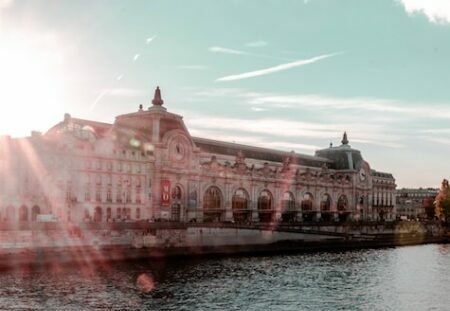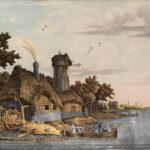Introduction
Oscar Wilde’s novel, “The Picture of Dorian Gray,” published in 1890, continues to captivate readers with its exploration of morality, hedonism, and the consequences of unchecked vanity. Set against the backdrop of Victorian society, the novel delves into the dark depths of human nature and the corrupting influence of art. Through a compelling plot, rich characters, and thought-provoking themes, Wilde’s masterpiece challenges societal norms and leaves a lasting impact on its readers.
Plot and Storyline
“The Picture of Dorian Gray” follows the life of the eponymous protagonist, Dorian Gray, a young and extraordinarily handsome man living in Victorian England. When the artist Basil Hallward becomes infatuated with Dorian’s beauty, he paints a portrait that captures his youth and allure. Dorian becomes enamored with his own image and makes a Faustian wish that the portrait ages and bears the consequences of his immoral deeds, allowing him to maintain his youth and beauty indefinitely.
As the story progresses, Dorian becomes increasingly corrupted by a hedonistic lifestyle, indulging in debauchery and immorality without concern for the consequences. The portrait, hidden away in his attic, becomes a visual representation of his sins, growing increasingly grotesque and monstrous while Dorian himself remains outwardly unblemished. Dorian’s descent into moral decay forms the central arc of the narrative, with each sin leaving a permanent mark on the portrait.
Characters
“The Picture of Dorian Gray” features a cast of compelling characters that contribute to the exploration of its themes. Dorian Gray, the magnetic and enigmatic protagonist, undergoes a transformation from an innocent young man to a corrupted and conscienceless individual. Wilde portrays him as a symbol of the destructive power of vanity and the allure of hedonism.
Basil Hallward, the artist who paints Dorian’s portrait, embodies the idealistic artist archetype. His infatuation with Dorian’s beauty and subsequent downfall highlights the artist’s role in both reflecting and influencing society’s moral standards. Lord Henry Wotton, a charismatic and cynical aristocrat, serves as Dorian’s corrupting influence, espousing hedonism and encouraging Dorian to indulge in his darkest desires.
Themes and Symbols
“The Picture of Dorian Gray” explores several profound themes that resonate with readers across generations. One central theme is the duality of human nature, as represented by the contrast between Dorian’s outwardly pristine appearance and the portrait’s deteriorating state. The novel also delves into the nature of art and its ability to capture and reveal the truth about its subjects.
Another significant theme is the corrupting influence of society and the pursuit of pleasure. Wilde critiques the superficiality and moral hypocrisy of Victorian society, highlighting the allure and dangers of indulgence without consequences. The novel further examines the concept of morality and the consequences of leading a life devoid of virtue.
Writing Style
Oscar Wilde’s writing style in “The Picture of Dorian Gray” is characterized by his wit, eloquence, and keen observations of human nature. His use of vivid descriptions and rich metaphors brings the story and its characters to life. Wilde employs epigrams and paradoxes to convey his philosophical ideas, infusing the narrative with a clever and thought-provoking tone.
The author’s mastery of language and dialogue allows him to explore complex themes while maintaining a sense of entertainment. Wilde’s narrative structure, with its mixture of dialogue, introspection, and descriptive passages, adds depth to the story and enhances the reader’s engagement. One example of Wilde’s distinctive style can be seen in Lord Henry’s captivating monologues, which are filled with provocative insights and sharp criticisms of society.
Setting and Atmosphere
“The Picture of Dorian Gray” is set in the backdrop of Victorian England, a society marked by rigid social codes and a strict adherence to morality. Wilde utilizes this setting to emphasize the stark contrast between the facade of propriety and the hidden vices that lurk beneath the surface. The opulent and decadent upper-class society serves as a breeding ground for corruption and hedonism.
The novel’s atmosphere is intricately crafted to evoke a sense of foreboding and moral decay. The dark and claustrophobic attic, where the portrait is hidden, symbolizes the hidden depths of Dorian’s soul and the consequences of his actions. Wilde’s description of opulent parties and lavish settings creates a seductive yet sinister ambiance that reflects the allure of indulgence and the potential dangers lurking within.
Historical, Social, or Political Context
“The Picture of Dorian Gray” was written during the late Victorian era, a time marked by strict societal conventions and moralistic attitudes. Wilde’s novel challenges these norms and provides a scathing critique of Victorian hypocrisy. The decadence and corruption depicted in the novel can be seen as a reflection of Wilde’s own experiences and the tensions between his personal life and societal expectationsduring that time.
Wilde’s exploration of art and its relationship with morality also reflects the Aesthetic Movement, which emerged in the late 19th century. The movement emphasized the pursuit of beauty and the belief that art should exist for its own sake, independent of any moral or social agenda. Wilde’s portrayal of Dorian Gray’s descent into moral degradation and the role of art in exposing his true nature can be seen as a commentary on the tension between art and morality within the Aesthetic Movement.
Impact and Reception
“The Picture of Dorian Gray” had a significant impact on literature and continues to be celebrated for its boldness and provocative themes. Initially met with controversy due to its perceived immorality and decadence, the novel has endured as a classic work of literature. Its exploration of the dark side of human nature and the corrupting influence of vanity and pleasure resonates with readers across time.
Wilde’s use of wit, satire, and social criticism in the novel contributed to his reputation as one of the greatest playwrights and authors of his time. Despite facing public condemnation and personal hardships, Wilde’s unique writing style and his ability to challenge societal norms have cemented his place in literary history.
“The Picture of Dorian Gray” continues to be studied in academic settings and has influenced numerous works of literature, art, and film. Its examination of the duality of human nature, the power of art, and the consequences of unchecked desires remains relevant and thought-provoking in contemporary society.
How does Oscar Wilde’s writing style enhance the story and impact the reader’s experience in “The Picture of Dorian Gray”?
Oscar Wilde’s writing style in “The Picture of Dorian Gray” is marked by its wit, eloquence, and keen observations of human nature, which greatly enhance the story and impact the reader’s experience. Wilde’s use of language, literary techniques, and narrative structure contributes to the overall richness and depth of the novel.
Firstly, Wilde’s mastery of language is evident throughout the book. He employs vivid descriptions and rich metaphors, allowing readers to visualize the scenes and characters with remarkable clarity. For example, when describing the portrait of Dorian Gray, Wilde writes, “The portrait itself will mystify you. It is a thing of great beauty, but with an underlying suggestion of terror.”
Moreover, Wilde’s use of dialogue adds depth to the story and reveals the complexities of the characters. The conversations between Lord Henry Wotton and Dorian Gray, in particular, are filled with provocative insights, clever wordplay, and sharp criticisms of society. Lord Henry’s monologues, in which he expounds on his hedonistic philosophy, are captivating and thought-provoking, leaving a lasting impact on the reader.
Wilde also employs literary techniques such as epigrams and paradoxes to convey his philosophical ideas. These succinct and witty statements encapsulate profound truths and challenge conventional wisdom. For instance, Lord Henry’s famous line, “The only way to get rid of a temptation is to yield to it,” encapsulates the novel’s exploration of the seductive allure of sin and the consequences of indulgence.
Furthermore, Wilde’s narrative structure adds to the reader’s engagement with the story. He seamlessly weaves together dialogue, introspection, and descriptive passages, allowing for a multifaceted understanding of the characters and their motivations. This narrative variety keeps the reader captivated and provides insight into the characters’ inner struggles.
Overall, Oscar Wilde’s writing style in “The Picture of Dorian Gray” enhances the story by bringing it to life through vivid language, clever dialogue, and profound insights. His unique blend of wit, eloquence, and narrative structure deepens the reader’s immersion in the novel and leaves a lasting impact.
Final Conclusions
Oscar Wilde’s “The Picture of Dorian Gray” is a masterpiece that delves into the complexities of human nature, the corrupting influence of vanity, and the power of art. Through a compelling plot, richly developed characters, and thought-provoking themes, Wilde challenges societal norms and explores the consequences of pursuing pleasure without moral restraint.
The novel’s enduring impact on literature and its ability to resonate with readers can be attributed to Wilde’s unique writing style, his incisive wit, and his ability to expose the hypocrisy of Victorian society. “The Picture of Dorian Gray” remains a timeless work that continues to captivate audiences, inviting them to reflect on the nature of morality, the pursuit of beauty, and the consequences of unchecked desires.
Sources
The Picture of Dorian Gray – Wikipedia
The Picture of Dorian Gray by Oscar Wilde | Goodreads
The Picture of Dorian Gray | Summary, Legacy, & Facts | Britannica






